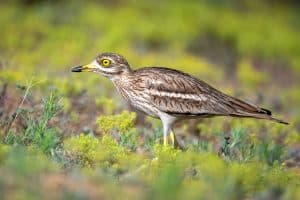FAQ - your most frequently asked questions?
Do you have any questions? We answer the most frequently asked questions.
If you can’t find the answer you’re looking for, don’t hesitate to contact us. To find out more about our business, please consult our glossary .
ECT has designed Urbafertil, a growing medium that reduces the need to import topsoil, a resource that must be preserved.
This fertile substrate is a 100% recycled solution, made from inert materials from construction sites and green waste composts. Urbafertil complies with standard NF U 44-551.
This substrate is made available to landscaping professionals. It can be produced directly in situ or delivered in big bags.
Every landscaping project is unique: each requirement calls for a specific set of specifications,
To contact the Urbafertil sales department: 01 60 54 57 58 | btilliet@groupe-ect.com.
“Les Yeux du Ciel” is located on the ECT site in Villeneuve-sous-Dammartin, Seine et Marne (77).
It’s a work of land art and aerial art imagined by Antoine Grumbach and created by the ECT company as part of the landscaping for its excavated earth reclamation site. In 2023, L’Œil Ouest was completed by ECT, after 6 months of earthworks and planting. It is visible to air travellers from the nearby Roissy Charles de Gaulle airport. Work on the second eye is scheduled to start in 2025.
Urbanization is leading to the disappearance of permeable soils and wetlands, which are essential for the diversity of ecosystems. In fact, wetlands are a complementary ecological environment to woodlands, copses, meadows and orchards. It allows a diversification of flora and fauna. The presence of water allows various species to settle and develop.
In addition, wetlands play a role in water quality, purifying water, buffering and regularly releasing stored water. It also cools the air.
Steppes are characteristic ecosystems of Eurasia or Mediterranean zones. Characterized by sparse vegetation and the presence of stones that render the area uncultivated, these vegetation-poor areas are appreciated by certain birds.
This is the case of the Common Buzzard (Burhinus oedicnemus). This particular environment enables the bird to breed, hidden on the ground, and to move around safely in an open space where it can see potential predators approaching from a distance.
Northern Île-de-France is home to the most northerly populations of this bird. It has virtually disappeared from Hauts-de-France and northern Europe. To help maintain its presence in northern Seine-et-Marne, and at the request of the French government, ECT has created a 1.2 ha “steppe” on the site. The objective? To enable a pair of Common Buzzards disturbed by work on the Roissy East bypass to relocate in the area.

The wooded edge is a key space. At the edge of the forest, it acts as a transition zone between wooded and open areas, forming an ecological corridor. The edges must be as varied as possible to provide shelter and cover for a wide range of fauna.
The orchard is a special environment. In its natural state, this type of vegetation does not exist. It’s a human creation. The planting of an orchard is conducive to the settlement of several bird species. As fruit trees age, they develop cavities that are used by various species such as chickadees, hoopoes and owls.
Some orchards also offer the opportunity to plant rare, local trees.
The first plants to develop here are annuals, gradually replaced by biennials, then perennials to form a herbaceous carpet which, depending on the richness of the soil, will be higher or lower. Grasslands can only be maintained by the action of wild or domestic herbivores, or by human action through repeated mowing.
Conservation agriculture was officially defined by the FAO in 2001, as based on three main principles:
- Maximum soil coverage (residues, crops or sown cover crops).
- No tillage (only disturbance of the seed line is tolerated).
- Diversification of crop species (long rotations and associated crops).
ECT’s environmental and social developments cost neither the community nor the landowner anything. Developing territories and their attractiveness at no cost to the community is possible by applying the principles of a circular economy to excavated soil from construction sites.
ECT ‘s business is to manage excavated soil from the construction industry and transform derelict and abandoned sites . The reuse of inert soil on these derelict sites finances their transformation.
- The construction and public works sector pays ECT for the management (environmental engineering, characterization, traceability, reception) of its surplus excavated soil.
- On the site to be transformed, the reuse and recovery ofexcavated soil finances 100% of the rehabilitation project and carried out in consultation with the community.
- For €1, ECT returns the finished layout to the local authority, which then benefits from a new layout, free of charge, for €0.